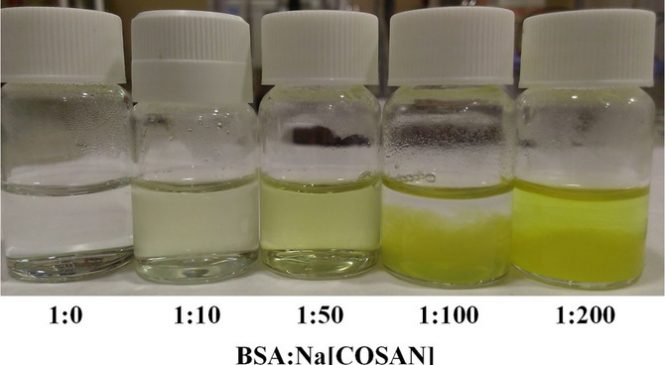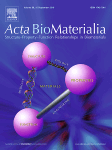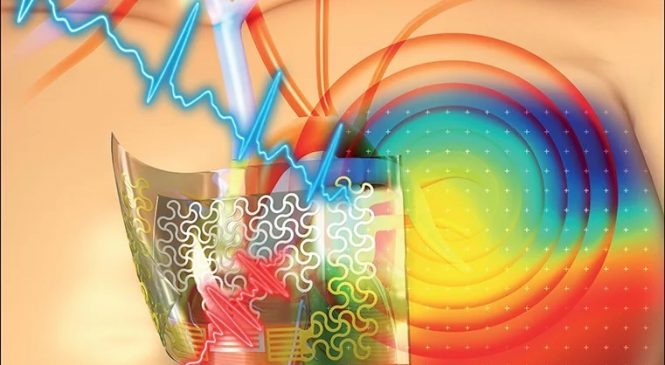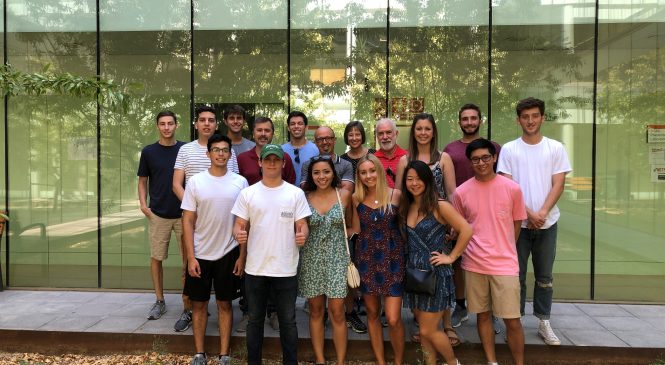Author: Nati Infante

Dr. Mario Caceres: “Evolutionary and functional impact of common polymorphic inversions in the human genome”
Nature Communications 10, Article number: 4222 (2019)
https://www.nature.com/articles/s41467-019-12173-x.epdf?author_access_token=cVjT1p3din4tGJbNLDyel9RgN0jAjWel9jnR3ZoTv0P-2IqhjSjJ3h8OoQACdg3_2Zs57EgxdseDbCAlUgZO9jSYZMidnZsRJxkAkaIfu2LAxppiY3VN8K2eAt2G6O7iHH_N5qqpM4UMjovqEWHu9A%3D%3D
Open Access
Abstract
Inversions are one type of structural variants linked to phenotypic differences and adaptationin multiple organisms. However, there is still very little information about polymorphicinversions in the human genome due to the difficulty of their detection. Here, we develop anew high-throughput genotyping method based on probe hybridization and amplification, andwe perform a complete study of 45 common human inversions of 0.1–415 kb. Most inversionspromoted by homologous reco

Dr. Isidre Gibert i Dr. Xavier Daura: “Sulfonamide-based diffusible signal factor analogs interfere with quorum sensing in Stenotrophomonas maltophilia and Burkholderia cepacia”
https://www.future-science.com/doi/abs/10.4155/fmc-2019-0015
https://doi.org/10.4155/fmc-2019-0015
Aim:Stenotrophomonas maltophilia (Sm) and Burkholderia cepacia complex (BCC) are Gram-negative bacterial pathogens, which are typically multidrug resistant and excellent biofilm producers. These phenotypes are controlled by quorum sensing (QS) systems from the diffusible signal factor (DSF) family. We aim to interfere with this QS system as an alternative approach in combatting such difficult-to-treat infections. Materials & methods: A library of sulfonamide-based DSF bioisosteres was synthesized and tested against the major phenotypes regulated by QS. Results & conclusion: Several analogs display significant antibiofilm activity while the majority increase the action of the...

Dr. Salvador Ventura:”Dual Binding Mode of Metallacarborane Produces a Robust Shield on Proteins”
https://onlinelibrary.wiley.com/doi/full/10.1002/chem.201902796
https://doi.org/10.1002/chem.201902796
Abstract
An inorganic sandwich molecule, Na[Co(C2B9H11)2], able to produce vesicles through self‐assembly and known to produce strong dihydrogen‐bond interactions with amine groups is capable of interacting with proteins. This dual non‐bonding ability of Na[Co(C2B9H11)2] is what makes this molecule unique: it can be firmly anchored to a protein surface and is capable of extending over it. To prove this, the widely available bovine serum albumin (BSA), which has many pendant amino groups in its structure, has been taken as the model protein. It has been found that around 100 molecules of Na[Co(C2B9H11)2] preserve the native structure of BSA, while endorsing it with a significantly inc

Dr. A. Villaverde: Collaborative membrane activity and receptor-dependent tumor cell targeting for precise nanoparticle delivery in CXCR4+ colorectal cancer
https://doi.org/10.1016/j.actbio.2019.09.002
Abstract
By the appropriate selection of functional peptides and proper accommodation sites, we have generated a set of multifunctional proteins that combine selectivity for CXCR4+ cell binding and relevant endosomal escape capabilities linked to the viral peptide HA2. In particular, the construct T22-GFP-HA2-H6 forms nanoparticles that upon administration in mouse models of human, CXCR4+ colorectal cancer, accumulates in primary tumor at levels significantly higher than the parental T22-GFP-H6 HA2-lacking version. The in vivo application of a CXCR4 antagonist has confirmed the prevalence of the CXCR4+tumor tissue selectivity over unspecific cell penetration, upon system
TESIS: Dr. Diego Velázquez Sánchez__ (12:00h.) Sala de Graus – Facultat de Ciències i de Biociències
"Exploring the regulatory mechanisms of the S. cerevisiae Ppz1 protein phosphatase and the molecular basis for its toxicity", de Diego Velázquez Sánchez
Defenses de tesis - Sala de Graus - Facultat de Ciències i de Biociències
Descripció:
Defensa de tesi doctoral
Doctorat en Bioquímica, Biologia Molecular i Biomedicina
Doctorand:
Diego Velázquez Sánchez
Tutor:
Joaquín Ariño
Director:
Joaquín Ariño
Ubicació: Sala de Graus - Facultat de Ciències i de Biociències
Data: Divendres 20, Setembre de 2019 - 12:00h

Dr. A Villaverde: Targeting Antitumoral Proteins to Breast Cancer by Local Administration of Functional Inclusion Bodies
https://onlinelibrary.wiley.com/doi/full/10.1002/advs.201900849
Abstract
Two structurally and functionally unrelated proteins, namely Omomyc and p31, are engineered as CD44‐targeted inclusion bodies produced in recombinant bacteria. In this unusual particulate form, both types of protein materials selectively penetrate and kill CD44+ tumor cells in culture, and upon local administration, promote destruction of tumoral tissue in orthotropic mouse models of human breast cancer. These findings support the concept of bacterial inclusion bodies as versatile protein materials suitable for application in chronic diseases that, like cancer, can benefit from a local slow release of therapeutic proteins.

